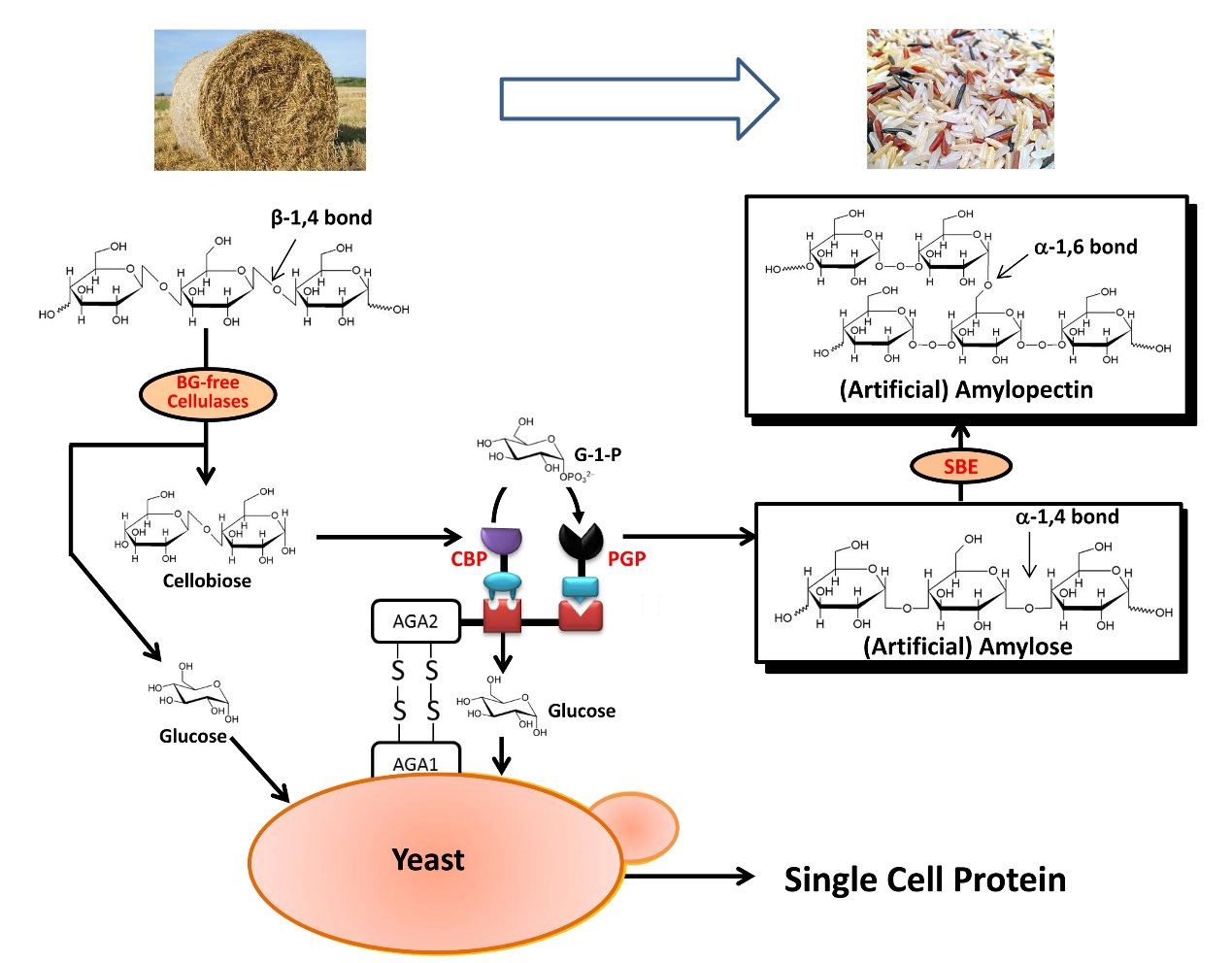Recently, researcher from Biotechnology Research Institute, Chinese Academy of Agricultural Sciences (BRI, CAAS) and Tianjin Institute of Industrial Biotechnology,Chinese Academy of Sciences (TIB, CAS) develop a new agricultural residue-based biorefining technology that can produce artificial food (i.e., starch and protein, two of the most important food components) to tackle the looming food crisis. Related results are published online in《Science Bulletin》。
Growing populations and climate change pose great challenges to food security. The efficient conversion of agricultural waste resources to artificial food is one of the important ways to alleviate the food crisis and realize the sustainable development of agriculture. The rapid development of synthetic biotechnology makes it possible for people to break the path of natural synthesis and create an efficient artificial biosynthesis system.
This study presents an out-of-the-box solution involving the highly efficient biosynthesis of artificial starch and microbial proteins from available and abundant agricultural residue as new feed and food sources. This study demonstrates consolidated cellulose hydrolysis and in vitro starch synthesis without energy input and with impressively high cellulose digestibility for pretreated corn stover using low-BG commercial fungal cellulase and an enzyme–yeast complex.Animal tests have shown that the digestion of artificial amylose results in slow and relatively small changes in blood sugar levels, suggesting that it could be a new health food component that prevents obesity and diabetes. A combination of the utilization of available agricultural residue and the biosynthesis of starch and microbial protein from non-food biomass could address the looming food crisis in the food–energy–water nexus.

Schematic presentation of simultaneous enzymatic transformation and microbial fermentation from biomass cellulose to artificial food
Prof.WeiZhang from IBR, CAAS, Prof. Yi-Heng P. Job Zhang and Yanhe Ma from TIB,CAS are the corresponding author of this paper. The associate professor Xinxin Xu from IBR, CAAS is the first author. This study was supported by the National Key Research and Development Program of China, the Agricultural Science and Technology Innovation Program and Tianjin Synthetic Biotechnology Innovation Capacity Improvement Project, China.
More details can be found at the link:https://doi.org/10.1016/j.scib.2023.01.006 |